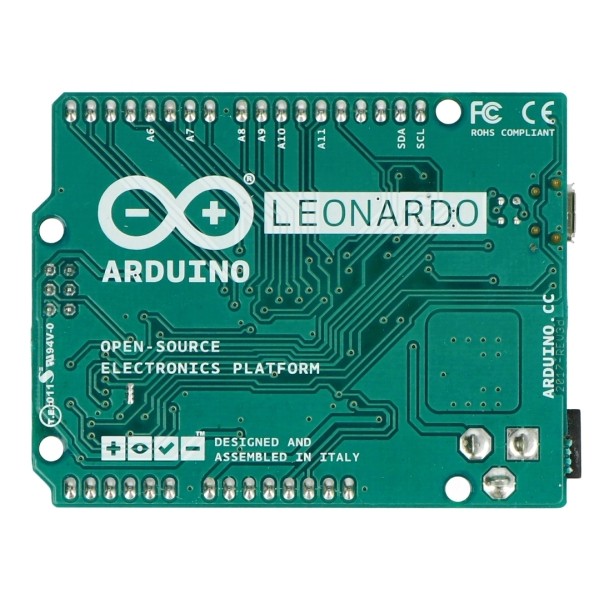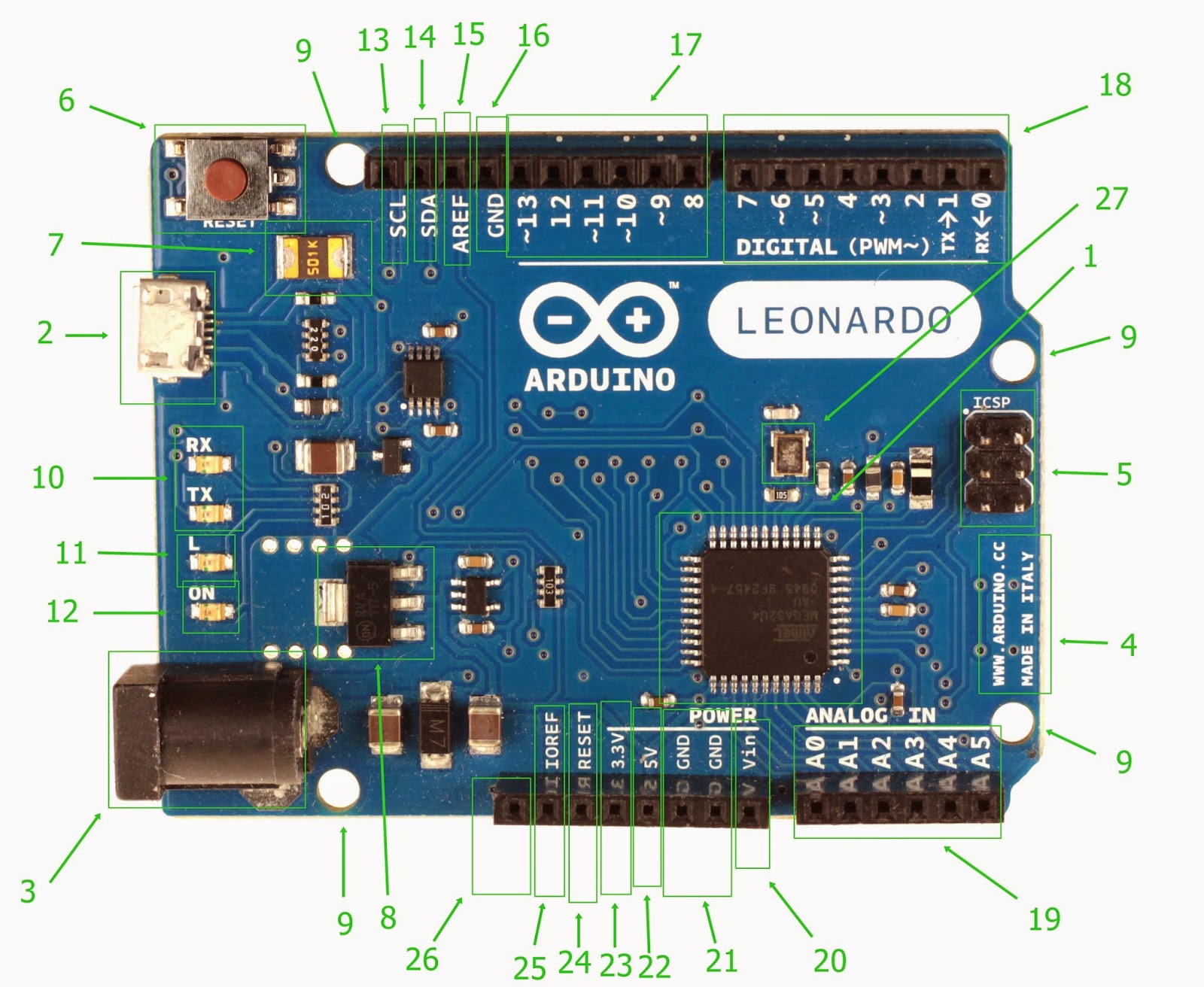

- ARDUINO LEONARDO LED SERIAL
- ARDUINO LEONARDO LED SOFTWARE
- ARDUINO LEONARDO LED CODE
- ARDUINO LEONARDO LED SERIES
The actual delay is 62.5 mS, which is exactly 1000/16. This tutorial teaches you to control LED using Arduino UNO or Genuino UNO. Uploading blink gives me a 8 Hz flash frequency with a period of 125 mS.

In the ini file, I then added board_build.f_cpu = 1000000L which is 16 times slower than the actual clock. The default clock is 16 MHz and a 1 second delay is roughly that and the scope says period = 1.98 S and frequency = 0.505 Hz which is as expected as there are two delays per flash! (That always catches me out!) You need to either default the frequency, leave it out of the ini file, or set it to the actual CPU clock frequency that the board is running. If I set the board build f_cpu to anything different, the timings don’t work correctly.

In the Leonardo, an op-amp between the ATmega pin and the led means that loading is minimal and the pin can easily be used. One Leonard-Micro difference is with the ‘built-in’ led.
ARDUINO LEONARDO LED SERIES
Each led in both is connected in series with a 1k resistor to limit current. In some boards, like the Arduino MKR series, it’s. The Arduino Micro is closely related to the Leonardo, with some small difference. On the Arduino Uno, it is near pin 13: On the Arduino MKR 1010 WiFi it is near the 5V output pin: This LED is connected to the digital I/O pin 13 in most boards. It is identified by the letter L next to it. The default is an 8 MHz internal clock, with a divide by 8 fuse set, so it’s running actually at 1 MHz. Arduino boards come with a little utility: the built-in LED.
ARDUINO LEONARDO LED CODE
I’ve got no experience whatsoever with Leonardo boards, but, the board_build.f_cpu doesn’t change the physical clock speed of the board, it’s there for when you have changed the hardware to a non-default CPU frequency as the F_CPU value is passed into the code to make sure that things “flash” at the correct speed. When I uncomment clock_prescale_set(clock_div_16) it blinks 8 times too slow. LCD & LED Displays LED Strips & panels LEDs Modules Passive E. Of course, if you are not happy with your order you can return it back to us for any reason within 14 days of receiving it.Runs fine with default platform.ini file, but when I change CPU frequency to: New Arduino family member - Arduino Leonardo. 30AWG + 3,20 USB micro B-kabel met LEDs - blauw en rood + 6,30 Toon meer resultaten. We have now sold hundreds of Arduino boards and have an almost insignificant return rate. De Arduino Leonardo met headers is een microcontroller board gebaseerd op de ATmega32u4. All our Arduino boards are built and tested at the same factory. The only significant difference is the price.
ARDUINO LEONARDO LED SOFTWARE
It also contains the same boot loader and is therefore identical in design, build and software to an original board. Arduino is an open standard and this board has been built exactly to the Arduino open source reference design. Please note that this item is Arduino compatible. DESCRIPTION The Arduino Leonardo is a microcontroller board based on the ATmega32u4 It has 20 digital input/output pins (of which 7 can be used as PWM.
ARDUINO LEONARDO LED SERIAL
This allows the Leonardo to appear to a connected computer as a mouse and keyboard, in addition to a virtual (CDC) serial / COM port. The Leonardo differs from all preceding boards in that the ATmega32u4 has built-in USB communication, eliminating the need for a secondary processor. int LED 10 int state LOW void blink Hi John Thomas, welcome to the arduino forum. It contains everything needed to support the microcontroller simply connect it to a computer with a USB cable or power it with an AC-to-DC adapter or battery to get started. It contains everything needed to support the. It has 20 digital input/output pins (of which 7 can be used as PWM outputs and 12 as analog inputs), a 16 MHz crystal oscillator, a micro USB connection, a power jack, an ICSP header, and a reset button. It has 20 digital input/output pins (of which 7 can be used as PWM outputs and 12 as analogue inputs), a 16 MHz crystal oscillator, a micro USB connection, a power jack, an ICSP header, and a reset button. The Arduino Leonardo is a microcontroller board based on the ATmega32u4 ( datasheet ). The Arduino Leonardo is a microcontroller board based on the ATmega32u4.


 0 kommentar(er)
0 kommentar(er)
